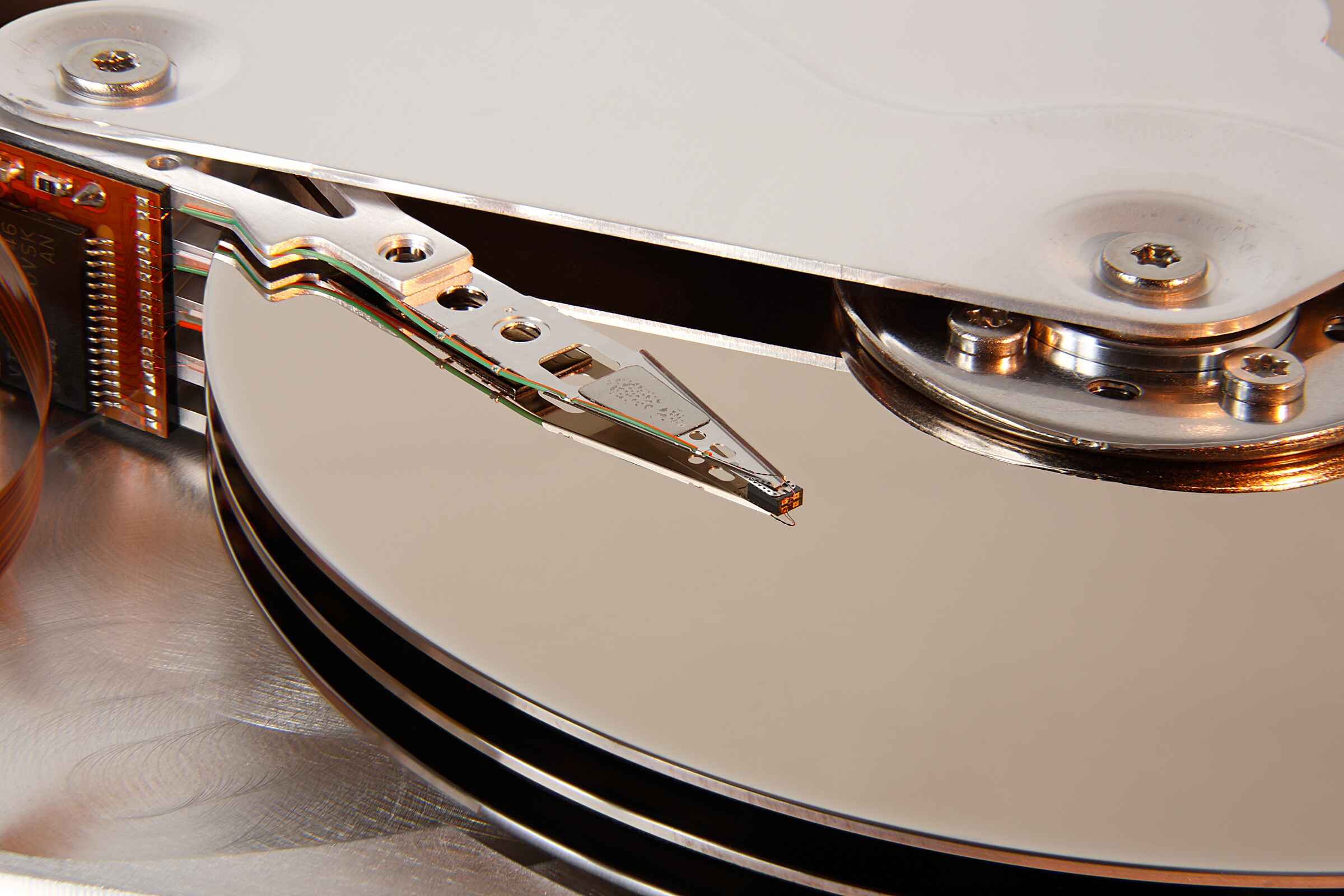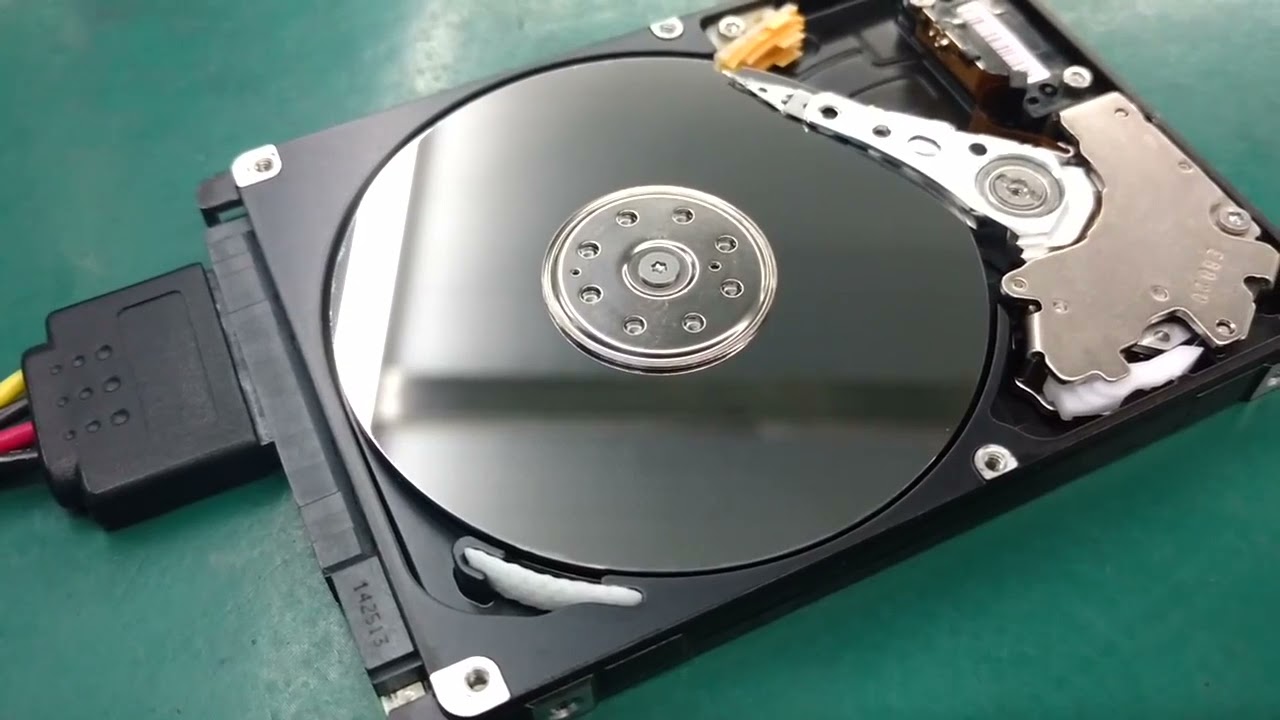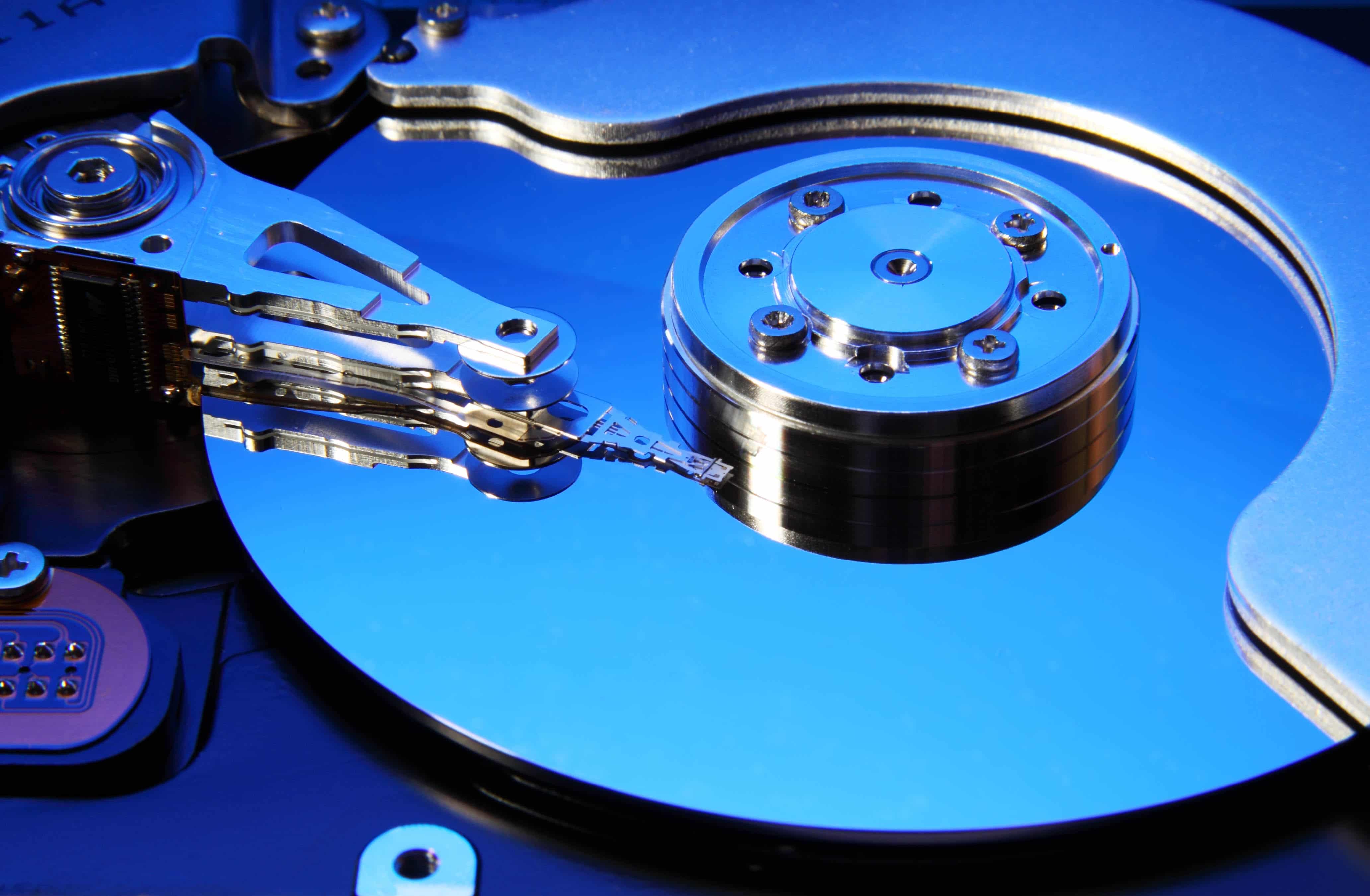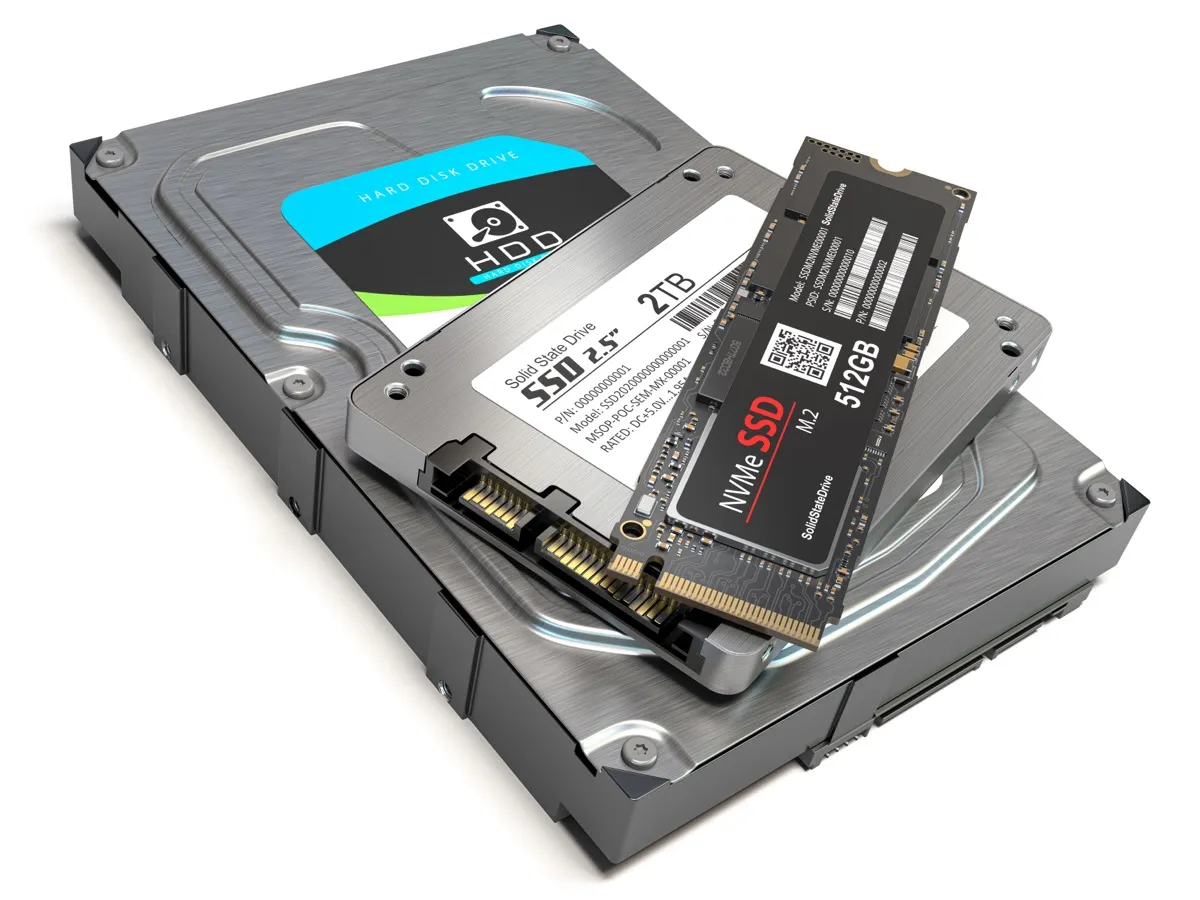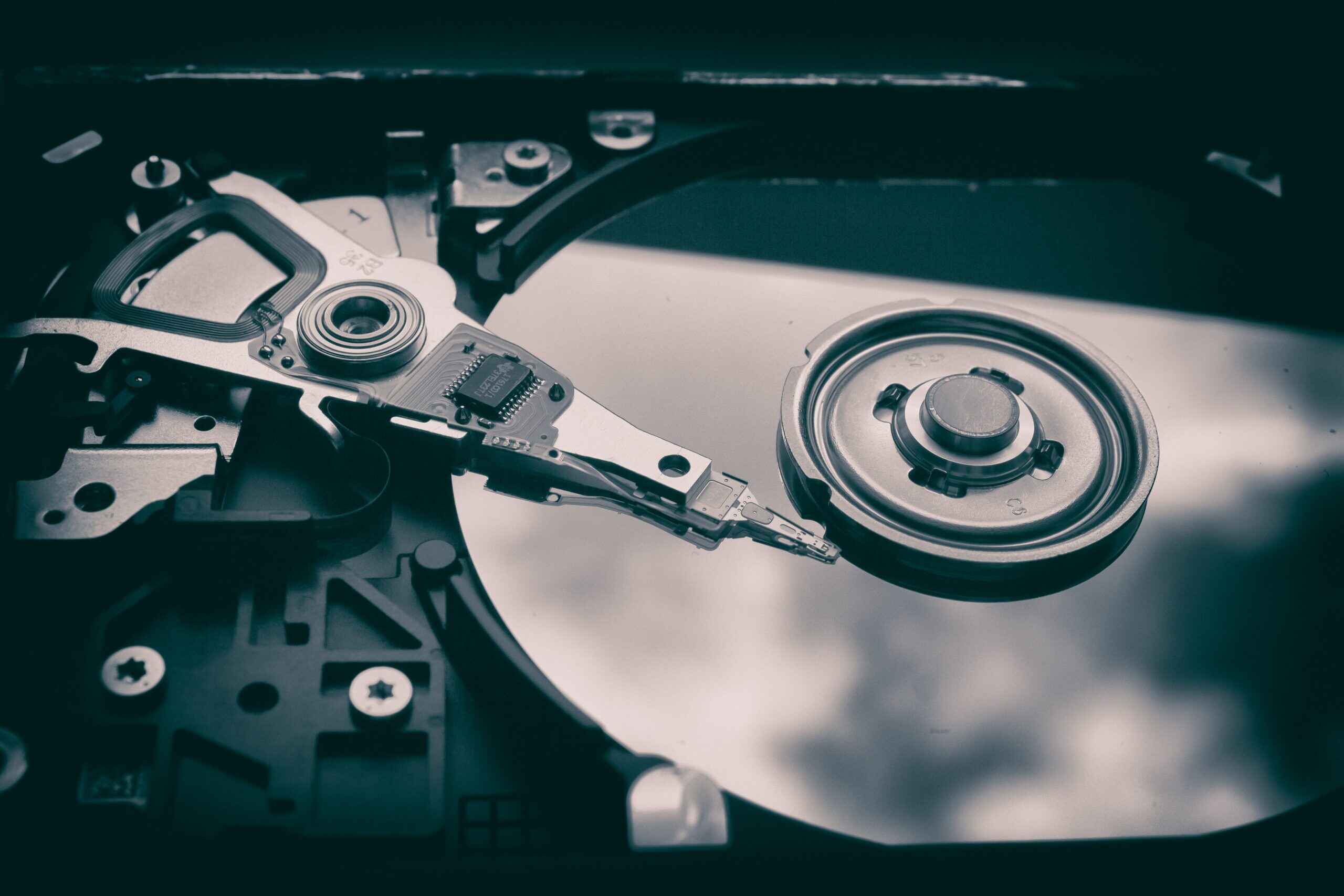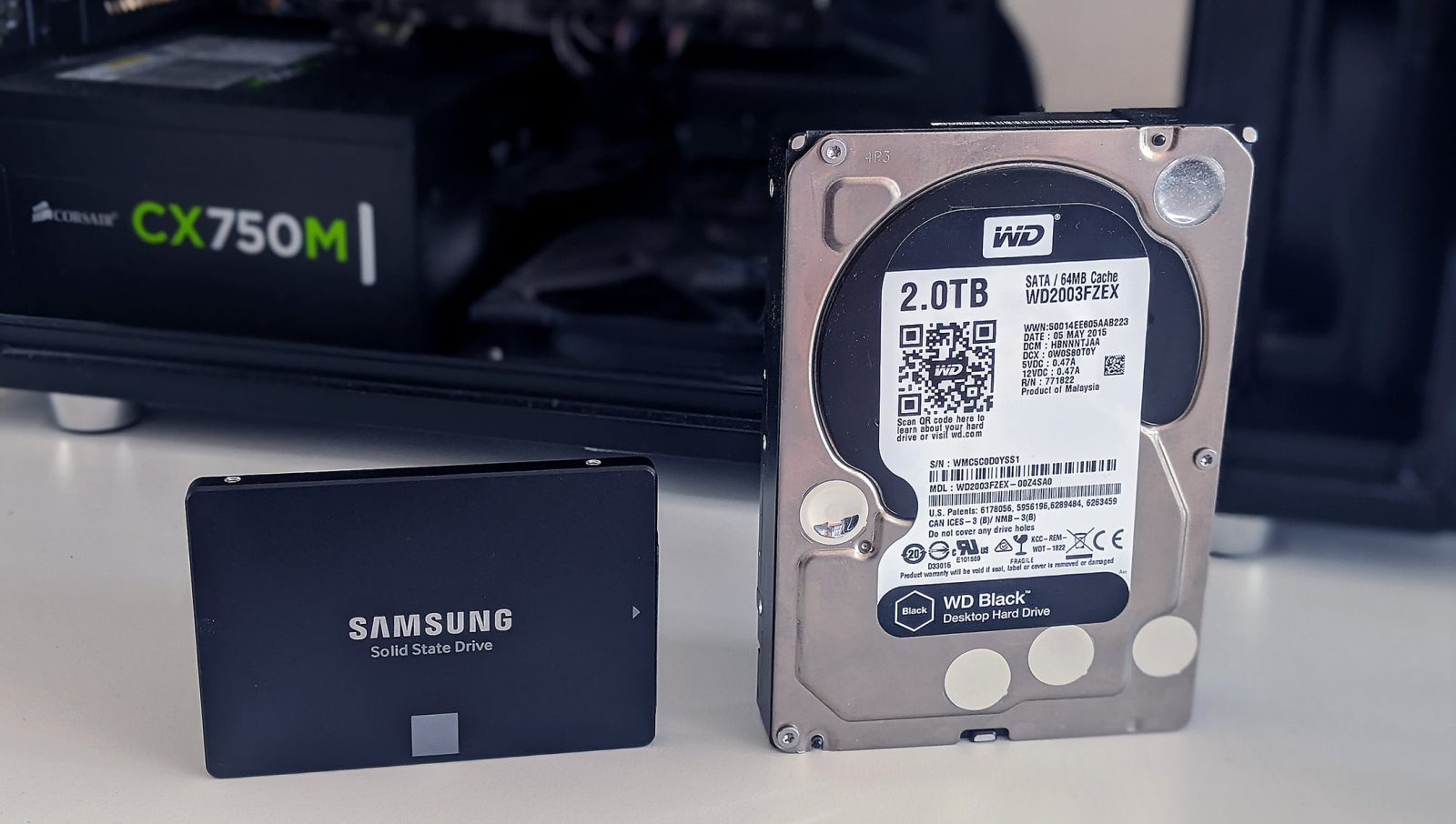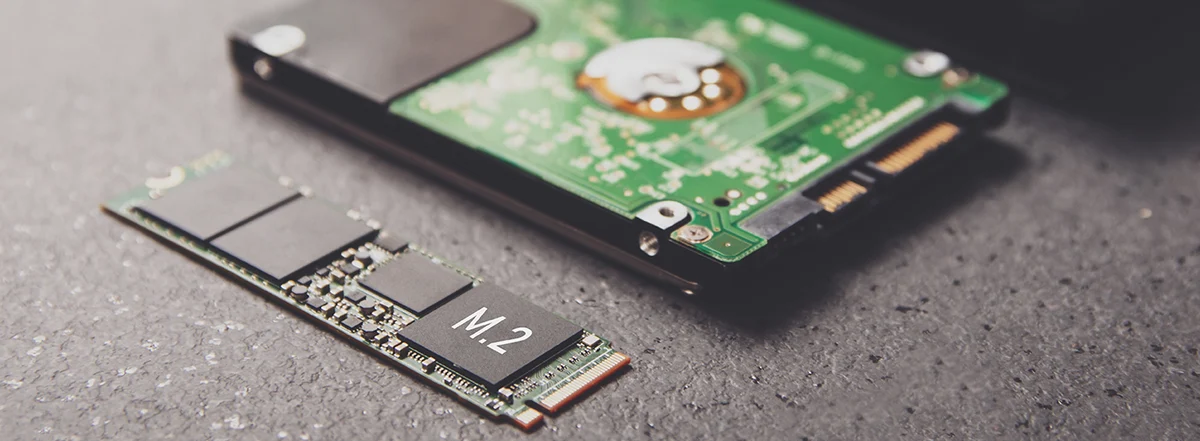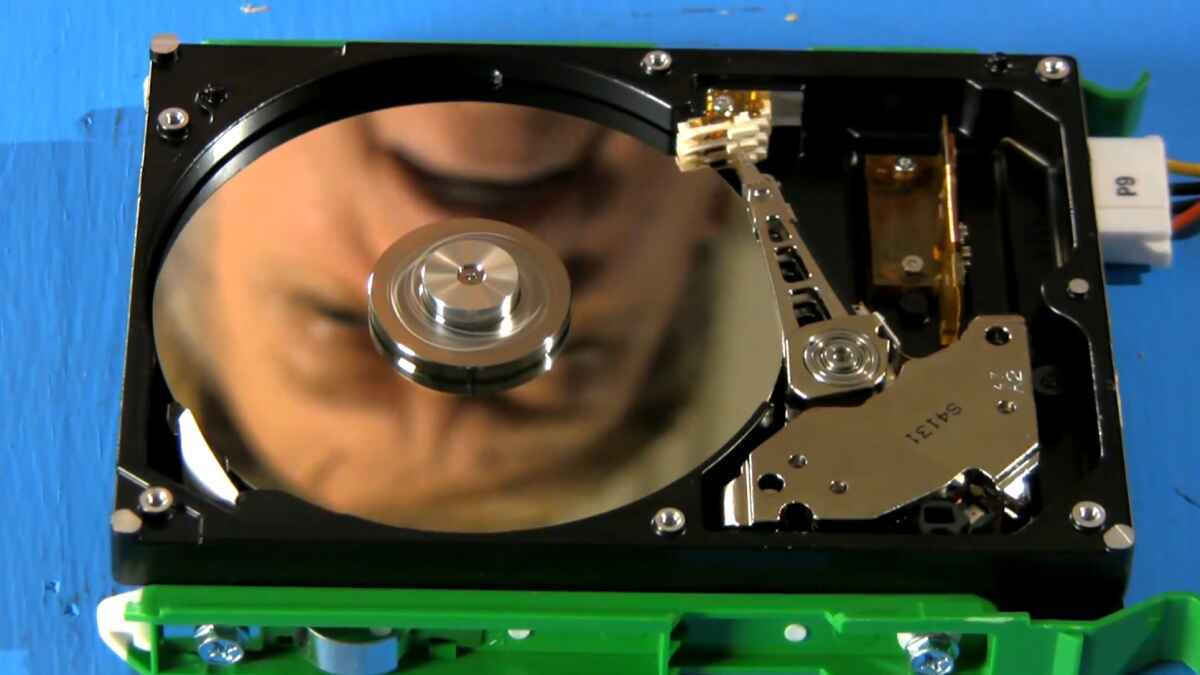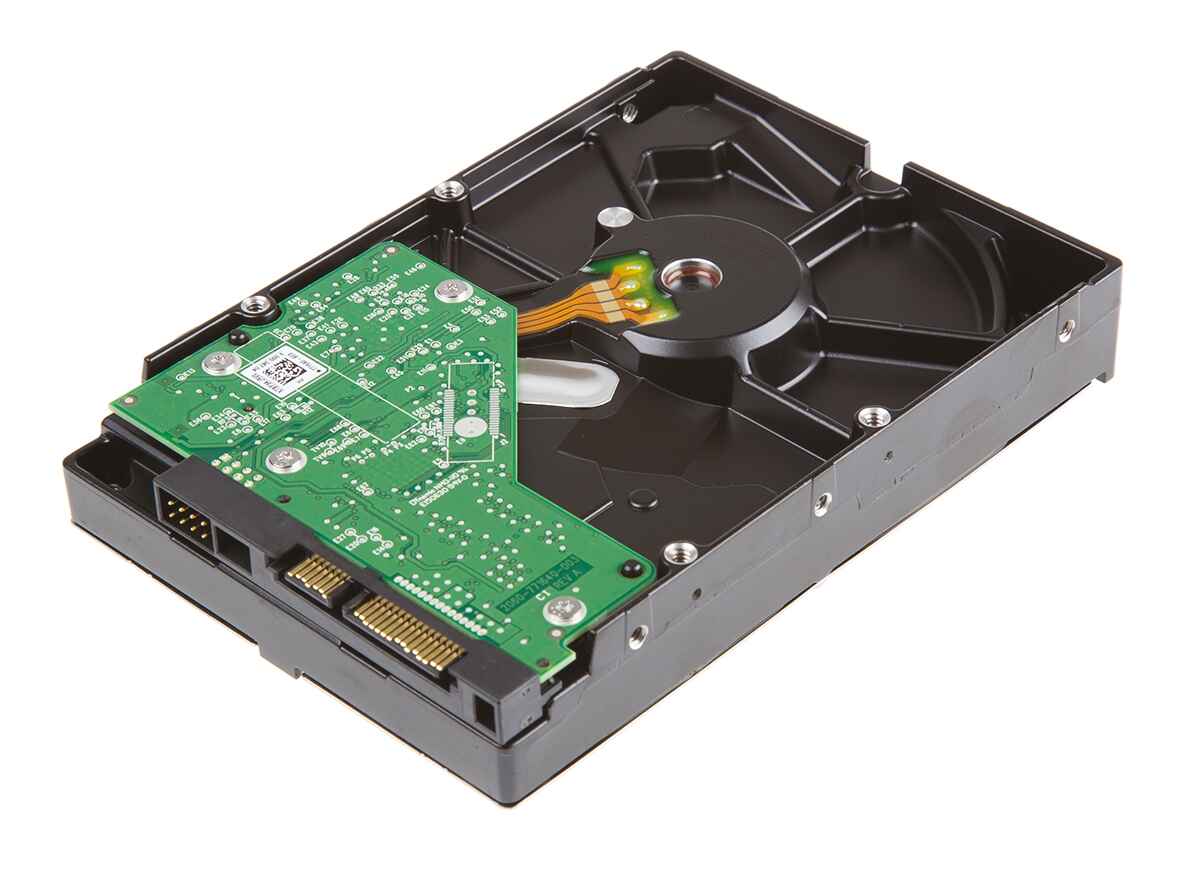Introduction
Hard Disk Drives (HDDs) have long been the primary storage solution for personal computers, servers, and other devices. They are widely used due to their reliability, large storage capacities, and cost-effectiveness. One crucial component of an HDD is its read/write heads, which play a vital role in retrieving and storing data on the magnetic platters.
Understanding how read/write heads operate and how many of them are utilized per platter in a traditional HDD is essential. This knowledge allows us to comprehend the complexity and efficiency of these drives. The intricate interplay between the read/write heads and the platters greatly impacts the performance and storage capacity of the HDD.
In this article, we will delve into the details of how HDDs work, the anatomy of a hard disk drive, and the specific role of the read/write heads. We will explore the concept of tiny read/write heads, examine the platter-to-head ratio, and discuss the various factors that affect the number of read/write heads used in an HDD.
By the end of this article, you will have a comprehensive understanding of the relationship between the read/write heads and the platters in a traditional HDD, shedding light on the inner workings of these storage devices. So, let’s embark on this insightful journey into the world of hard disk drives and discover the intriguing dynamics of their read/write heads.
How Hard Disk Drives (HDDs) Work
Hard Disk Drives (HDDs) are data storage devices that use rotating platters coated with a magnetic material to store and retrieve digital information. The operation of an HDD can be broken down into several steps.
When data is written to an HDD, an electrical current is used to create a magnetic field on the write head. This magnetic field aligns the magnetic particles on the surface of the platter, representing the data being stored. As the platters spin at high speeds, the tiny read/write heads glide over the surface, reading the magnetic patterns and converting them back into digital information.
To read data from an HDD, the read head detects the magnetic fields on the platter. When it encounters a magnetic region with a specific alignment, it generates a voltage that is then converted into digital information by the drive’s electronics.
To ensure accurate reading and writing of data, HDDs utilize a technique known as error correction. This involves adding additional bits of data to each sector that are used to check and correct any errors that may occur during the reading or writing process.
The speed and performance of an HDD are influenced by various factors. The rotational speed of the platters, measured in revolutions per minute (RPM), affects the read and write speeds of the drive. Higher RPMs result in faster data access times. The data transfer rate, measured in megabytes per second (MB/s), determines how quickly data can be read or written to and from the drive.
HDDs also have a buffer, or cache, that stores recently accessed data to improve performance. This buffer acts as a temporary holding area, allowing the drive to quickly retrieve frequently accessed data without needing to read it from the platters.
In summary, HDDs work by storing and retrieving data using magnetic platters and read/write heads. The read/write heads read the magnetic patterns on the platters, converting them into digital information, while the write heads create magnetic fields on the platters to store data. Error correction techniques are used to ensure data integrity, and factors such as RPM and data transfer rate impact the overall performance of the HDD.
Anatomy of a Hard Disk Drive
To better understand the mechanics of a hard disk drive (HDD), it is important to explore its internal components. Let’s take a look at the different parts that make up an HDD and their functions.
The main components of an HDD include the platters, read/write heads, actuator arm, spindle motor, and controller board. The platters are the circular disks coated with a magnetic material where the data is stored. They are stacked vertically and spin at a constant speed, typically ranging from 5,400 to 15,000 revolutions per minute (RPM).
The read/write heads are positioned very close to the surface of the platters and are responsible for reading and writing data. Each platter has a pair of read/write heads, with one head dedicated to reading data and the other for writing data. These heads are connected to an actuator arm, which moves them across the platter surfaces.
The actuator arm, driven by a voice coil motor, moves the read/write heads to the desired track on the platter. This positioning is crucial for accessing the specific data stored on the disk. The controller board, also known as the HDD’s electronic circuit board, coordinates and controls the movement of the actuator arm and the read/write heads.
The spindle motor is responsible for spinning the platters at the desired RPM. It maintains the rotational speed, ensuring that the read/write heads are able to accurately access the necessary data on the platters.
In addition to these main components, the HDD also features a variety of sensors and filters. For example, a thermal sensor monitors the internal temperature of the drive, helping to prevent overheating. Filters are employed to remove any contaminants from the air inside the drive, ensuring optimal performance and longevity.
To protect the delicate read/write heads and platters, modern HDDs often incorporate a feature called the ramp load/unload mechanism. When the drive is powered off or on standby, the actuator arm safely parks the heads on a ramp, preventing them from coming into contact with the platters and potentially causing damage.
Overall, the anatomy of a hard disk drive involves several essential components that work together to enable the storage and retrieval of data. From the spinning platters and the read/write heads to the actuator arm and control mechanisms, each component plays a crucial role in the functioning of the HDD.
Platters in a Hard Disk Drive
Platters are the heart of a hard disk drive (HDD). These circular, rigid disks are made of aluminum or glass and are coated with a magnetic material that allows data to be stored magnetically. The number of platters in an HDD depends on the storage capacity and design of the drive.
Typically, an HDD will have multiple platters stacked on top of each other. The most common configuration is to have a minimum of two platters, with higher capacity drives often featuring three or more platters. The platters are securely mounted on a spindle that rotates them at a constant speed.
The size of the platters can vary, with 3.5-inch and 2.5-inch being the most commonly used sizes in desktop and laptop HDDs, respectively. The larger 3.5-inch platters allow for greater storage capacity and faster data transfer rates compared to their smaller counterparts.
Each platter is divided into concentric tracks, similar to the rings on a target. These tracks are further divided into sectors, which are small, pie-shaped regions on the platter’s surface. Each sector can store a fixed amount of data, typically 512 bytes or 4 kilobytes.
The data on the platters is written and read using the read/write heads, which are positioned very close to the surface. The smooth and precise rotation of the platters is crucial to ensure that the read/write heads can accurately access the data on the correct track and sector.
Advanced technology, such as perpendicular magnetic recording (PMR) and shingled magnetic recording (SMR), has been developed to increase the storage capacity of HDDs without significantly increasing the physical size of the platters. These techniques allow for higher areal density, meaning more data can be stored in each square inch of the platter’s surface.
It is important to handle HDDs with care, especially when they are powered on and the platters are spinning. Any physical shock or movement can cause the read/write heads to crash into the platters, resulting in data loss and damage to the drive.
In summary, the platters are the key components of a hard disk drive, providing the surface area where data is magnetically stored. Multiple platters are stacked and rotated at a constant speed, allowing the read/write heads to access the data stored in the concentric tracks and sectors. Understanding the role and characteristics of the platters is essential for gaining a complete understanding of how HDDs function.
Read/Write Heads in a Hard Disk Drive
The read/write heads are crucial components of a hard disk drive (HDD) that play a vital role in the storage and retrieval of data. These tiny, delicate components are responsible for reading data from and writing data to the magnetic platters inside the HDD.
Each platter in an HDD is accompanied by a pair of read/write heads. One head is dedicated to reading data, while the other is used for writing data. The heads are positioned very close to the magnetic surface of the platters, hovering just nanometers above them.
The read/write heads are mounted on a moving component called the actuator arm. The actuator arm is attached to a voice coil motor, which controls its movement across the surface of the platters. When data needs to be accessed from a specific track on the platter, the voice coil motor moves the actuator arm and the read/write heads to the desired location.
To read data from the platters, the read head detects the magnetic fields on the surface as it passes over them. When the read head encounters a region with a specific magnetic alignment, it generates a voltage that represents the data stored on the platter. This voltage is then converted into digital information by the HDD’s electronic circuits.
When writing data to the platters, the write head creates a magnetic field on the surface. This field aligns the magnetic particles on the platter, encoding the data being written. The write head relies on an electrical current to generate the required magnetic field strength for writing.
The read/write heads need to be incredibly precise in their positioning and movements to ensure accurate reading and writing of data. Any slight misalignment or variation can result in read or write errors, leading to data corruption or loss.
To improve performance and enhance reliability, HDDs employ various techniques to compensate for issues that may arise with the read/write heads. One common technique is the use of error correction codes (ECC), which help detect and correct any errors that occur during the data transfer process.
It is worth noting that the read/write heads are delicate and sensitive to physical shocks and movements. Any sudden impact or vibration while the HDD is in operation can cause the heads to collide with the platters, resulting in catastrophic damage to both the heads and the platter surface.
In summary, the read/write heads are essential components in an HDD that enable the reading and writing of data to and from the magnetic platters. Their precision, positioning, and movement are critical to the overall performance and reliability of the drive. Understanding the intricacies of the read/write heads provides valuable insights into the complex workings of a hard disk drive.
What are Tiny Read/Write Heads?
Tiny read/write heads, also known as magnetic recording heads, are the microscopic components in a hard disk drive (HDD) responsible for reading and writing data on the magnetic platters. These heads are incredibly small yet highly precise, allowing for the precise positioning required to access and store data on the platters.
As technology has advanced, the size of the read/write heads has shrunk significantly. Older HDDs used larger heads, while modern HDDs utilize much smaller heads due to advancements in manufacturing and nanotechnology. The trend towards smaller heads is driven by the need to increase data storage capacity and density in HDDs.
The tiny size of the read/write heads enables them to position themselves very close to the platter surface, with the distance typically being just a few nanometers. This proximity allows for greater sensitivity in reading the magnetic patterns and more precise writing of data.
The heads are typically made with advanced materials such as thin-film, magnetic alloys, and metallic compounds that exhibit excellent magnetic properties. They are engineered with intricate designs and special coatings to minimize friction and wear when in contact with the platter surface.
To ensure accurate data transfer, the read/write heads incorporate various technologies and features. One such feature is the use of magneto-resistive elements, which are sensitive to the changes in magnetic fields on the platters. This sensitivity allows for higher data densities and improved read and write performance.
Additionally, modern HDDs employ components like preamps and signal processors to enhance the signals generated by the read heads. These components help amplify, filter, and process the weak electrical signals generated by the read heads, resulting in improved signal quality and data integrity.
Advancements in technology have also led to the development of innovative types of read/write heads. For example, heat-assisted magnetic recording (HAMR) uses laser-generated heat to assist in writing data at higher densities. Similarly, microwave-assisted magnetic recording (MAMR) uses microwaves to enhance signal strength and overcome the superparamagnetic limit, allowing for higher storage capacities.
In summary, tiny read/write heads are the microscopic components in an HDD that read and write data on the magnetic platters. Their small size allows for precise positioning and sensitivity, leading to improved data storage density and performance. These heads incorporate advanced materials, innovative designs, and specialized technologies to ensure accurate data transfer and reliable operation of the HDD. Understanding the intricacies of these tiny heads provides valuable insights into the advancements and capabilities of modern hard disk drives.
Platter-to-Head Ratio in a Hard Disk Drive
The platter-to-head ratio is an important aspect of a hard disk drive (HDD) that refers to the number of platters in relation to the number of read/write heads present in the drive. This ratio greatly influences the storage capacity, performance, and efficiency of an HDD.
In a traditional HDD, each platter is accompanied by a pair of read/write heads, with one head dedicated to reading data and the other for writing data. This configuration allows for simultaneous read and write operations to take place on each platter, which enhances the overall performance of the drive.
The platter-to-head ratio is determined by the number of platters and the design of the HDD. The more platters there are, the higher the storage capacity of the drive. However, increasing the number of platters also requires a corresponding increase in the number of read/write heads to access the data on each platter.
Ideally, the platter-to-head ratio should be balanced to avoid overcrowding or underutilization of the heads. If there are too few read/write heads for the number of platters, the performance of the HDD may be compromised. The heads will need to move across a larger area to access the data, resulting in slower data retrieval and reduced efficiency.
On the other hand, having too many read/write heads for the number of platters can also lead to inefficiency. If there are more heads than available platters, some heads will remain idle, resulting in wasted resources and increased manufacturing costs.
Manufacturers carefully determine the optimal platter-to-head ratio based on factors such as the desired storage capacity, performance targets, and cost considerations. High-capacity HDDs typically feature multiple platters and a corresponding number of read/write heads to ensure efficient data storage and retrieval.
Advancements in technology, such as the use of advanced head positioning mechanisms and improved data transfer protocols, have allowed for higher platter-to-head ratios in modern HDDs. This has led to larger storage capacities and faster data access times.
It is worth noting that as storage technology evolves, alternative designs and configurations are being explored. For example, some HDDs are designed with multiple heads per platter to further increase the storage density and performance. These variations in platter-to-head ratios aim to maximize the utilization of the platter surfaces and optimize overall HDD functionality.
In summary, the platter-to-head ratio is a critical factor in determining the storage capacity and performance of an HDD. A balanced ratio ensures efficient data access and utilization of resources. Understanding the relationship between the platters and read/write heads provides insights into the design and capabilities of hard disk drives.
Factors Affecting the Number of Read/Write Heads
The number of read/write heads in a hard disk drive (HDD) is influenced by several factors, including the desired storage capacity, performance requirements, and technological constraints. Let’s explore the key factors that determine the number of read/write heads in an HDD.
1. Storage Capacity: One of the primary factors influencing the number of read/write heads is the desired storage capacity of the HDD. Larger storage capacities generally require more platters, and therefore, more read/write heads to access and store data on each platter. Manufacturers carefully determine the appropriate number of heads to efficiently utilize the available platter space and maximize the storage capacity.
2. Physical Space: The physical space inside an HDD is limited, and there is a practical constraint on the number of read/write heads that can be accommodated. The size of the heads and the necessary spacing between them to avoid interference or collisions play a role in determining the maximum number of heads that can be installed in an HDD design.
3. Performance Considerations: The performance requirements of the HDD also impact the number of read/write heads. Having more heads allows for parallel access to data, which can result in faster data retrieval and improved overall performance. However, there is a trade-off between the number of heads and the complexity of the mechanical components controlling their movement, as well as the potential increase in power consumption and heat generation.
4. Manufacturing Costs: The number of read/write heads affects the manufacturing costs of the HDD. More heads require additional components and precision engineering, which can increase the overall manufacturing expenses. Manufacturers need to strike a balance between the desired performance and storage capacity and the associated costs to ensure a competitive and cost-effective product.
5. Technological Advances: Advances in technology and manufacturing techniques can influence the number of read/write heads. Technological innovations have allowed for the production of smaller and more precise heads, enabling higher platter-to-head ratios and increased storage densities. Furthermore, improvements in head positioning mechanisms and data transfer protocols have enabled greater efficiency and performance enhancements, leading to variations in the number of heads per platter.
In summary, the number of read/write heads in an HDD is determined by various factors, including storage capacity requirements, physical limitations, performance considerations, manufacturing costs, and technological advancements. Manufacturers carefully consider these factors to ensure the optimal balance between storage capacity, performance, manufacturing feasibility, and cost-effectiveness in their HDD designs.
How Many Tiny Read/Write Heads Service Each Platter?
The number of tiny read/write heads that service each platter in a hard disk drive (HDD) is determined by the design and configuration of the drive. In a traditional HDD, there are typically two read/write heads per platter, with one head dedicated to reading data and the other for writing data. This configuration allows for simultaneous read and write operations on each platter.
Having two read/write heads per platter is a common configuration in HDDs. This design ensures efficient data access and storage, as the read/write heads can operate independently, enabling simultaneous read and write activities. The heads are positioned very close to the surface of the platters, hovering just nanometers above, to accurately read and write the magnetic data.
The pairing of the read/write heads on each platter helps to optimize the performance of the HDD. While one head is reading from or writing to a specific area of the platter, the other head can move to a different track or sector, helping to minimize access times and enhance overall data transfer rates.
The selection of two read/write heads per platter strikes a balance between performance and cost. Increasing the number of heads would require additional components, increased complexity in the mechanical design, and potentially higher manufacturing costs. On the other hand, reducing the number of heads could impact the performance of the HDD, leading to slower data access times and decreased efficiency.
It is important to note that variations in the design of HDDs can impact the number of read/write heads servicing each platter. Some high-capacity HDDs may feature multiple heads per platter to further increase storage densities. These variations aim to maximize the utilization of the platter surface area and optimize the read/write operations, enhancing both capacity and performance.
Technological advancements in recent years have allowed for improvements in the number of heads per platter. The development of smaller, more precise read/write heads, as well as innovations in head positioning mechanisms, has led to higher platter-to-head ratios in modern HDDs. These advancements have resulted in larger storage capacities and faster data access speeds.
In summary, in a traditional HDD, there are typically two tiny read/write heads servicing each platter. This configuration ensures simultaneous read and write operations and strikes a balance between performance and cost. However, variations in HDD design and technological advancements have allowed for higher platter-to-head ratios in modern drives, leading to increased storage capacities and improved performance.
Conclusion
In conclusion, understanding the intricate workings of the read/write heads in a hard disk drive (HDD) provides valuable insights into the storage and retrieval of data. These tiny, delicate components play a pivotal role in reading and writing data on the magnetic platters within the HDD.
The read/write heads are positioned close to the platter surface, carefully hovering just nanometers above. Their precision and sensitivity allow for the accurate retrieval and storage of data. The number of heads per platter is typically two, with one head dedicated to reading and the other for writing. This configuration ensures efficient operations and simultaneous read and write activities.
Factors such as storage capacity requirements, performance considerations, physical space limitations, manufacturing costs, and technological advances influence the number of read/write heads in an HDD. Manufacturers aim to strike a balance between performance, capacity, feasibility, and cost-effectiveness in their designs.
Advancements in technology have led to smaller and more precise read/write heads, allowing for increased platter-to-head ratios and higher storage densities. Techniques like perpendicular magnetic recording (PMR) and shingled magnetic recording (SMR) have further enhanced the storage capacity of HDDs.
Overall, the intricate interplay between the platters and read/write heads in an HDD demonstrates the complexity and efficiency of these storage devices. The understanding of these components sheds light on the fascinating dynamics of data storage and retrieval in the world of HDDs.
As technology continues to evolve, it is possible that future innovations could bring about changes in the design and configuration of read/write heads in HDDs. Nevertheless, the role of these tiny components in the storage industry remains crucial as they continue to enable the efficient and reliable storage of vast amounts of data.







